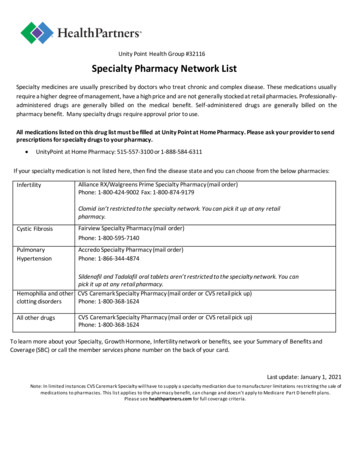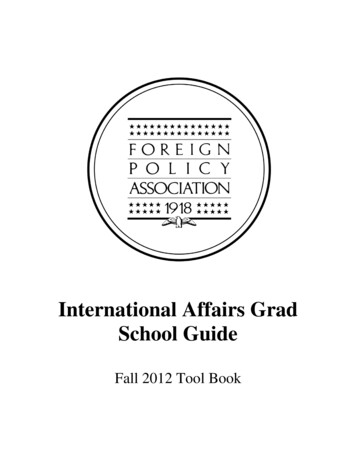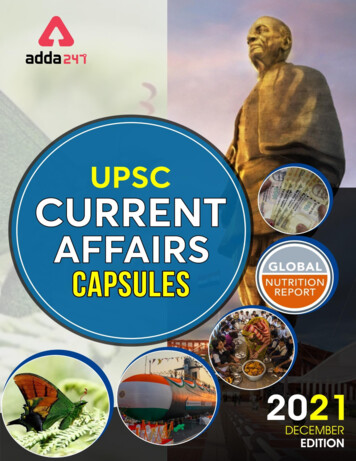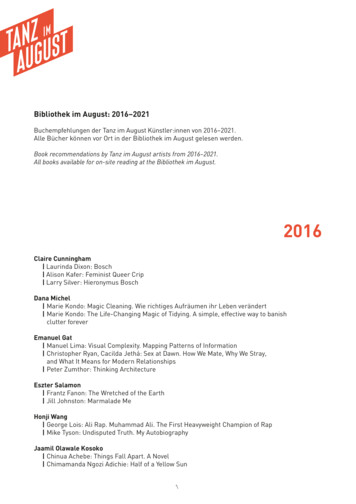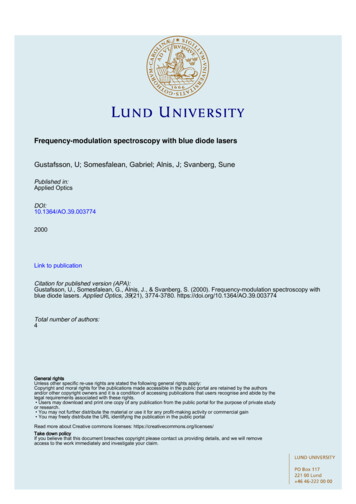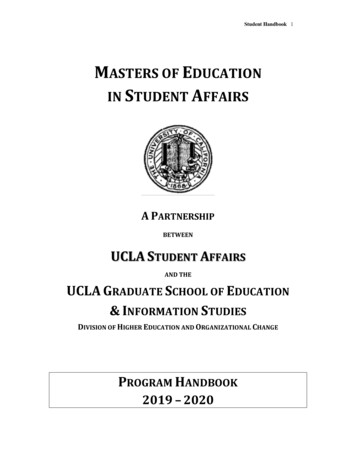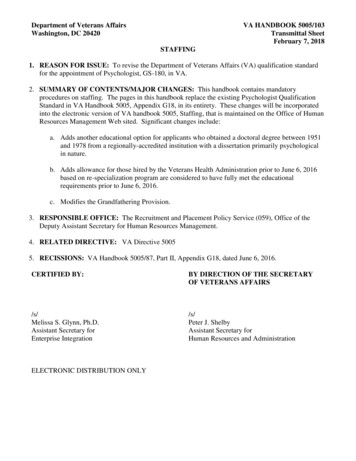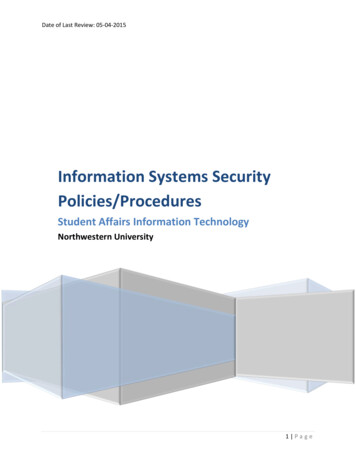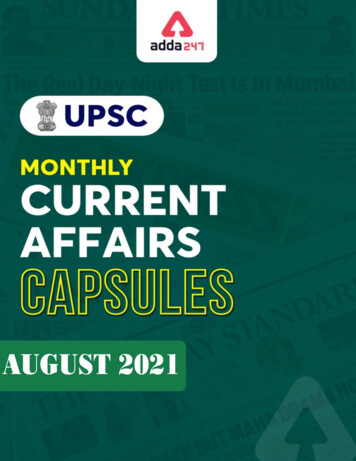
Transcription
August 2021 Current Affairs Capsule1www.bankersadda.com www.sscadda.com www.careerpower.in Adda247 App
August 2021 Current Affairs CapsuleMonthly Current Affairs Magazine – August 2021It is the time to fast-track and target the UPSC Civil Services Examination preparationfor Prelims 2021. To ease the preparation, we are providing monthly current affairscompilation for the aspirants. The magazine contains subject-wise distribution ofcomprehensive news articles, and a separate section for Prelims Booster Articles."Every day is a chance to begin again. Don't focus on the failures of yesterday, start today withpositive thoughts and expectations." - Catherine PulsiferContentsPolity & Governance . 3International Relations .27Economy .32Social Issues .45Environment & Biodiversity .50Science & Technology .60Security .65History, Art & Culture .68Prelims Booster Articles .702www.bankersadda.com www.sscadda.com www.careerpower.in Adda247 App
August 2021 Current Affairs CapsulePolity & GovernanceUttar Pradesh Draft Population Bill 2021Context Uttar Pradesh’s state law commission has presenteda draft Population Bill 2021 while invitingcomments from experts and other stakeholders. It proposes to introduce two-child policy norms byincentivizing it through various governmentmeasure. The draft law is based on the findings of the NationalFamily Health Survey-4.Key features: Rationale for the draft bill:o Effective use of limited ecological andeconomic resources at hand.o For promotion of sustainable developmentwith more equitable distribution.o to ensure healthy birth spacing throughmeasures related to augmenting the availability,accessibility and affordability of qualityreproductive health services to achieve thegoal of population control, stabilization andits welfare in the State Dis-incentives: for couples violating the two-childpolicy norms.o Debarred from benefits of all governmentsponsored welfare schemes,o Cannot contest election to local bodies,o Ineligible to apply for government jobs underthe state government,o Cannot get a promotion in a government job,o His or her ration card would be limited to fourmembers, ando He or she shall be ineligible to receive any kindof government subsidy. Incentives: for couples adhering to two-child policynorms.o A soft housing loan, rebate on charges forutilities such as water, electricity, and house taxamong other things.o Government employees who adhere to thetwo-child norm will also get two additionalincrements during the entire service, maternityor paternity leave of 12 months with full salaryand allowances and free health care facility andinsurance coverage to the spouse.3www.bankersadda.com Incentives for those with single child: This forthose who have only one child and undergovoluntary sterilization will get additional benefitslikeo Free health care facilities and free insurancecoverage to the single child till they turn 20,o Preference to single child in admission in alleducational institutions, including IIMs andAIIMS, free education up to graduation level,o Scholarship for higher studies in case of a girlchild and preference to a single child ingovernment jobs.o Public servants: sticking to the one-child normwill be eligible for four additional increments inall apart from the incentives promised to thegeneral public doing the same.o Couple living below the poverty line: havingone child and one of them go voluntarysterilization, will be eligible for monetarybenefits (Rs 80,000 if the single child is a boy,and Rs 1 Lakh if the single child is a girl) from thegovernment.Associated concerns with the draft bill Puts women’s health and well-being at risk:o Women sterilization will likely to get increasedas burden of contraception and family planningdisproportionately falls on women.o Stringent population control measures havepotential to magnify unsafe abortion as there isstrong son-preference in Indian society as hasbeen seen in many states.www.sscadda.com www.careerpower.in Adda247 App
August 2021 Current Affairs Capsule Disproportionatelyaffectingmarginalizedsections of the society: as they are prone to socioeconomic benefits provided by the government.Evidence also suggests that coercive measuresdoesn’t result in population control in India.o For example, putting bar on individuals havingmore than two children from contesting localelections, will disproportionately affect poor’srepresentation in local bodies.Way forward: Focusing on socio-economic empowerment: willlead to comprehensive development of newgeneration along with reducing the fertility rate ofthe state as has been witnessed in many southIndian states. Harnessing the population growth for achievingsustainable economic growth: this can be done bycomprehensively researching various aspects ofpopulation growth. Collaborativeand cooperative approachtowards family planning: The government at alllevels- Union, State and Local, citizens, civil societiesas well as the businesses must take the onus topromote awareness and advocate the sexual andreproductive rights of women and encourage theuse of contraception.Supreme Court Verdict on 97th AmendmentContext Recently,Supreme Court quashed someprovisions of 97th Constitutional Amendmentsthat deals with cooperative societies.Key points The Supreme Court has upheld the judgement ofthe Gujarat High Court and has struck down someof the provisions with a 2:1 majority. While Justices Nariman and Justice Gavai struckdown only that part of Part IXB that dealt withcooperative societies and were confined to states,Justice Joseph in a separate judgment struck downthe entire 97th constitutional amendment. Supreme Court held that cooperative societies is asubject in List II (State List) of the 7th Schedule ofIndian Constitution. So, the Parliament do not havethe constitutional mandate to make laws on thissubject. The 97th amendment gave usurping power to theParliament and made a direct in-road into theexclusive domain of states to enact laws withregard to cooperatives.4www.bankersadda.com Background The 97th Constitutional Amendment Act was enactedin 2011 to deal with issues relating to cooperatives societies of our country. The amendment inserted the word cooperativesin Article 19(1)(c), Article 43B and Part IXBof Indian Constitution.View of the Union Government The centre has emphasised on the importance of97th amendment. It said that the provision wasadded to bring uniformity and professionalism inthe management of cooperative societies. Cooperative societies were suffering from poorservices and low productivity due to lack ofaccountability by the members. Elections are not held on time. Co-operativesocieties need to run on democratic principles.These reasons have made it imperative for thecentre to intervene.Supreme Court reply Supreme Court, however, said that had the centre’sobjective were to bring uniformity, it should havedone it through Article 252 of Indian Constitutionthat deals with power of Parliament to legislate fortwo or more states by consent. It held that as per Article 368(2) of theConstitution, the 97th Constitutional Amendmentrequired ratification by at least one-half of the statelegislatures. Since such ratification was not done in the case ofthe 97th amendment, it was unconstitutional andneed to be struck down.What the SC upheld? The SC upheld the validity of provisions related toMulti State Cooperative Societies (MSCS). It did not strike down the portions of Part IXB of theAmendment concerning ‘Multi State Co-operativeSocieties (MSCS)’ due to the lack of ratification asdiscussed above. Here SC was of the view that MSCS are not confinedto one state, thus, the legislative power dealing withthis section would reside with Union of India asgiven under Entry 44 List I (Union List) of the 7 thSchedule of the Constitution.www.sscadda.com www.careerpower.in Adda247 App
August 2021 Current Affairs CapsuleWay forward The judgement declared that Part IXB of theConstitution is operative only insofar as it concernsMSCS both within the various States and in theUnion Territories.Sedition Law: Background, Relevance andChallenges of the Colonial LawContext Recently, Supreme Court while criticizing thegovernment for its frequent use of sedition law,asked why a colonial law used against MahatmaGandhi and Bal Gangadhar Tilak continued tosurvive in the law book after 75 years ofIndependence.Key points about sedition law About: It is a crime under Section 124A of the IndianPenal Code (IPC). Definition: Section 124A defines sedition as anoffence committed when "any person by words,either spoken or written, or by signs, or by visiblerepresentation, or otherwise, brings or attempts tobring into hatred or contempt, or excites or attemptsto excite disaffection towards the governmentestablished by law in India".o Disaffection includes disloyalty and allfeelings of enmity.o However, comments without exciting orattempting to excite hatred, contempt ordisaffection, will not constitute an offence underthis section. Punishment under sedition law:o Sedition is a non-bailable offence.o Punishment under the Section 124A ranges fromimprisonment up to three years to a life term, towhich fine may be added.o A person charged under this law is barred froma government job.o They have to live without their passport andmust produce themselves in the court at alltimes as and when required. Observations made by freedom fighters:o Mahatma Gandhi called it- the prince amongthe political sections of the IPC designed tosuppress the liberty of citizens.o Pandit Jawaharlal Nehru said that theprovision was “obnoxious” and “highlyobjectionable” and “the sooner we get rid of itthe better”.5www.bankersadda.com Historical background It was originally drafted in 1837 by ThomasMacaulay but later inexplicably omitted when theIndian Penal Code (IPC) was enacted in 1860. It was further re-introduced as Section 124A underIPC in 1870 by Sir James Stephen in response tothe Wahabi movement.o It was one of the many draconian laws enactedto stifle any voices of dissent at that time.Government’s argument for retaining the seditionlaw To help in effectively combating anti-national,secessionist and terrorist elements in thecountry. To ensure stability of the state established underthe law: from any attempts to overthrow thegovernment with violence and illegal means. To counter violent activities of internal armedgroups: who openly talk about overthrowingdemocratically elected state government byrevolution. For example, Moist insurgency.Arguments against sedition law Violates right to freedom of speech andexpression: which is provided by the Constitutionas fundamental rights under article 19. Widespread misuse: it is being invoked even incases where there is no incitement to violence ortendency to create public disorder.o Its provisions are vague and prone to multipleinterpretation, for example, ‘public order’,‘disaffection’, etc. This leads to misuse by thegovernment based on their whims and fanciesand other narrow political interest.o Government use this tool to suppress dissentand criticism of government which areessential ingredients of public policy in a vibrantdemocracy.o It is also being misused as a tool to persecutepolitical dissent. Other section of IPC and laws like UnlawfulActivities Prevention Act 2019 have provisionsthat penalize "disrupting the public order" or"overthrowing the government with violence andillegal means".o These are sufficient for protecting nationalintegrity, eliminating the need for a dedicatedSection 124A under IPC. Britain (introduce sedition to oppress Indians) hasalready abolished sedition law in their country,prompting India to do so.www.sscadda.com www.careerpower.in Adda247 App
August 2021 Current Affairs CapsuleWay forward Reconsideration of the sedition law: In August2018, the Law Commission of India published aconsultation paper recommending that it is time tore-think or repeal Section 124A of the Indian PenalCode that deals with sedition. Limiting the scope of the section 124A: toterrorist activity against India and interests of Indiaalong with issue affecting territorial integrity andthe sovereignty of the country. Sensitization of police and magistrates at theground level: who often use this draconian law onpeople committing minor offenses or for whichother laws are available. India is the largest democracy of the world and theright to free speech and expression is an essentialingredient of democracy. The expression or thoughtthat is not in consonance with the policy of thegovernment of the day should not be considered assedition.Samagra Shiksha SchemeContext Central government has launched National Initiativefor Proficiency in Reading with Understanding andNumeracy (NIPUN Bharat) scheme under itsflagship scheme- Samagra Shiksha Abhiyan. Aim of NUPUR initiative: to create an enablingenvironment to ensure universal acquisition offoundational literacy and numeracy, by the end ofGrade 3, by 2026-27.About Samagra Shiksha It is an overarching program for the schooleducation sector extending from pre-school toclass 12 with the goal of improving schooleffectiveness-measured in terms of equalopportunities for schooling and equitablelearning outcomes. Integration: of three erstwhile schemes1. Sarva Shiksha Abhiyan (SSA)2. Rashtriya Madhyamik Shiksha Abhiyan (RMSA)and3. Teacher Education (TE) It aims to improve quality of school education byfocusing on the two T’s – Teacher and Technology. Vision: to ensure inclusive and equitable qualityeducation from pre-school to senior secondary stagein accordance with the Sustainable DevelopmentGoal (SDG) for Education (SDG 4).6www.bankersadda.com Implementing mechanism: the department ofschool education and literacy is the nodal agency forimplementation. State/UT level: Implementation through a singleState Implementation Society (SIS). States would beexpected to bring a single Plan for the entire schooleducation sector. Union level:o Governing Council headed by Minister ofHuman Resource Development: empoweredto modify financial and programmatic normsand approve the detailed guidelines forimplementation within the overall Frameworkof the scheme.o Project Approval Board (PAB) headed bySecretary, Department of School Education andLiteracy. Funding pattern: it is a centrally sponsoredscheme.o 90:10 for 8 North-Eastern States (ArunachalPradesh, Assam, Manipur, Meghalaya, Mizoram,Nagaland, Sikkim and Tripura) and 3Himalayan States (Jammu & Kashmir,Himachal Pradesh and Uttarakhand).o 60:40 for all other States and UnionTerritories with Legislature.o It is 100% centrally sponsored for UnionTerritories without Legislature.Important features of the scheme: it focuses on Administrativereform:harmonizedimplementation through Single and unifiedadministrative structure and flexibility to states toprioritize their interventions under the scheme. Quality Education through:o Capacity Building of Teachers and School Headso Improving the quality of prospectiveteachers: by strengthening Teacher EducationInstitutions like SCERTs and DIETs.o Support for Rashtriya Avishkar Abhiyan: topromote Science and Maths learning in schools.o Support Padhe Bharat Badhe BharatProgramme: to develop foundational skills atprimary level. Digital Educationo Support ‘Operation Digital Board’ in allsecondary schools over a period of 5 years.o Enhanced use of digital technology in educationthrough smart classrooms, digital boards andDTH channelso Digital initiatives like UDISE , Shagun, to bestrengthened www.sscadda.com www.careerpower.in Adda247 App
August 2021 Current Affairs CapsuleStrengthening of Schoolso Transport facility to children across all classesfrom I to VIII.o Supports ‘Swachh Vidyalaya’: for ensuringcleanliness.o Improve the Quality of Infrastructure inGovernment Schools Girl Educationo Upgradation of Kasturba Gandhi BalikaVidyalayas (KGBVs) from Class 6-8 to Class 6-12.o Self-defence training for girls from upperprimary to senior secondary stageo Enhanced Commitment to ‘Beti Bachao BetiPadhao’ Skill Developmento Exposure to Vocational Skills at UpperPrimary Level would be extended.o Vocational education for Class 9-12 asintegrated with the curriculum and to be mademore practical and industry oriented.o Reinforce emphasis on ‘Kaushal Vikas’ Sports Education to be an integral part ofcurriculum: allocation for buying sportsequipments, aims to inculcate and emphasizerelevance of sports. Regional Balanceo Preference to Educationally Backward Blocks(EBBs), LWE affected districts, Special FocusDistricts (SFDs), Border areas and the 117aspirational districts identified by Niti Aayog.Expected benefits of the scheme: Improve the transition rates across the variouslevels of school education and aid in promotinguniversal access to children to complete schooleducation. Integration of Teacher Education: would facilitateeffective convergence and linkages betweendifferent support structures in school educationthrough interventions such as a unified trainingcalendar, innovations in pedagogy, mentoringand monitoring, etc. Need-focused and dynamic in-service program:as this will conducted and monitored by the SCERT(nodal agency) under the scheme. Use of technology: would help in widening theaccess of good quality education across all Statesand UTs and across all sections of the Society.Revamped BharatNet 7www.bankersadda.com Context: Recently, the cabinet has approved the revampedBharatNet (BharatNet 2.0) project, with anadditional allocation of more than Rs.19,000 crore.Key points: Private players will be enrolled through PublicPrivate Partnership (PPP) model, and it will beimplemented in 16 states. It will extend to all inhabited villages, beyond theGram Panchayats (GPs). The responsibility of creation, maintenance,operation, upgradation, and utilisation will rest withthe concessionaire, who will be selected through aninternational bidding process.What is BharatNet? It is a central sector scheme of Ministry ofCommunication. It is implemented by Bharat Broadband NetworkLimited, a special purpose vehicle. It was first launched in 2011 as National OpticalFibre Network, and was renamed as BharatNet in2015. The objectives under this mission were to connectall the 2.50,000 GPs through an optical fibrenetwork and provide 100 Mbps connectivity to allGPs. It is funded, entirely, by the Universal ServiceObligation Fund (USOF), which was launched toimprove the telecommunication services in ruralareas of the country.Significance of BharatNet programme: Digital divide: The programme can reduce thedivision created by the digital technology in ruraland urban areas. It has cross sectoral benefits ranging from egovernance,e-farming,e-healthcare,eeducation, e-commerce among others. It will help integrating the rural areas of the countryin achieving the objectives of digital India. It will help in expediting government initiatives likeStart-up India, Stand-up India, Make-in India. The project has a special advantage in the presentpower line infrastructure like easy maintenance,faster implementation etc.www.sscadda.com www.careerpower.in Adda247 App
August 2021 Current Affairs CapsuleReasons for the launch of BharatNet 2.0: The earlier version was unable to achieve the lastmile connectivity. Lack of functional Internet connectivity: Thereport of Digital Empowerment Foundation’sresearch has found that only 50 of the 269 surveyedGPs had broadband internet connection and only11% of them had functional internet connection. Poor internet speed: The objective of 100 Mbpswas not met and the internet speed in GPs, whereverit was available, was very slow. Poor Implementation: Most of the delay was due tothe absence of any detailed project report.Steps needed to make BharatNet 2.0 successful: Establish accountability: This is one of the cardinalsteps in making a project successful. Governmentshould fix accountability and put the name in thepublic forum. Use funds properly: The earlier phase of theproject faced the dearth of funds. The allocatedamount in the successive budget has not been usedeffectively. Digital Literacy: The digital divide could bereduced by increasing the digital literacy in theremote areas.o Initiatives like PM Grameen Digital SakshartaAbhiyan (PMGDISHA) can prove to be a gamechanger in this direction.o This could also reduce the financial frauds,which are prevalent in rural areas of the country. Affordability: The internet should be madeaffordable to the people. Just making internetaccessible to rural areas is only a half-won battle. Gender gap: The internet service should be madeinclusive by focussing on the socio-economicweaker section of the society including women.Way Forward:In the era of digital revolution, internet services havebecome a necessity. The objective of inclusivedevelopment needs an equity-based solution,specifically tailored for the socio-economic backwardstrata of the Indian population. BharatNet has thepotential to make our country, truly, Aatmanirbhar!8www.bankersadda.com Recusal Of Judges and The Issues Arising fromItContext Recently, a Delhi High Court judge recused himselffrom hearing a petition of digital media houses,which challenged the validity of the IT rulesregulating intermediaries. It is not a one-off caseand, just a few days ago, two Supreme Court judgeshad recused themselves from hearing a plea relatingto West Bengal.Recusal of Judges: What it means? Recusal or judicial disqualification means an actof abstention by any presiding court officer or anadministrative officer from participating in anofficial action due to a conflict of interest.Grounds for recusal The judge is biased in favour of a litigant of any case. The judge has an interest in the subject matter,either directly or indirectly. The judge is having prior experience on the subjectof litigation. The judge knows the litigants personally.What does the constitution say?Article 14, under its due process of law, states that noone can be a judge of her own case. Owing to thiscardinal feature, conflict of interest was accepted as aground for recusal.Process of recusal The decision of recusal is, generally, taken by thejudge herself. There are no formal laws, whichdefines the process of recusal. It is left on the conscience of judges to declarewhether there is any potential conflict of interestarising from the litigation. When a judge recuses, the case is listed before theChief Justice for allotment to a fresh Bench.Past Supreme Court judgements It is a central sector scheme of Ministry ofCommunication. Although there are no formal rules, several SupremeCourt judgements have dealt with the issue. Ranjit Thakur v Union of India (1987): In thiscase, the Supreme Court opined that the test of thelikelihood of bias is the reasonableness of theapprehension in the mind of the parties to thelitigation.www.sscadda.com www.careerpower.in Adda247 App
August 2021 Current Affairs Capsule The 1999 charter ‘Restatement of Values in JudicialLife’— a code of ethics adopted by the SupremeCourt—states, “A Judge shall not hear and decide amatter in a company in which he holds shares unless he has disclosed his interest and no objectionto his hearing and deciding the matter is raised”.Issues with the recusal of judges Frequent recusal of judges from the cases raisesquestions on the independence of the judiciary, abasic feature of our constitution. Parties, sometimes, suggests that the judge shouldrecuse herself from litigation. This precedent ofjudging the judge, without any significant evidence,is an alarming trend. It allows parties to cherry-pick judge of their ownchoice. The rule, which states that no one should be thejudge of her own case, is subject to differentinterpretations. The conflict-of-interest clause is,at many times, misused. Judges do not record the reasons for recusal inwriting, leaving plenty of scope for conjecture.Way forward In 2015, Justice Kurian Joseph and Justice MadanLokur, while holding the National JudicialAppointments Commission unconstitutional, statedthe need for judges to give reasons for recusal tobuild transparency and help frame rules to governthe process. Recusal must not become an instrument tonavigate the justice delivery. Judicial officers must resist all the pressure, nomatter where they are coming from. It is what ourconstitution expects from them. There is a need for definite and exhaustive rules,which deals specifically with this issue.One Nation One Ration CardContext Recently, the Supreme Court directed all states andUnion Territories to implement the One Nation, OneRation Card (ONORC) system, which allows forinter- and intra-state portability, by July 31.9www.bankersadda.com Supreme court ruling:o It directed States and UT to distribute dryrations and run community kitchen for migrantworkers and center to provide needed grains toimplement this.o Directed the Centre to re-determine the totalnumber of beneficiaries under National FoodSecurity (NFS) Act, 2013.ONORC scheme: About:o Due to large scale intra-state and inter-statemigration, a large section of the PublicDistribution System (PDS) beneficiaries underNFS Act 2013, were unable to access theirentitlements.o This is because NFSA beneficiaries were allowedto collect their subsidized rations from assignedFair Price Shop (FPS) only.o To rectify this anomaly, ONORC was launched inAugust, 2019.o Nodal ministry: Ministry of ConsumerAffairs, Food and Public Distribution. Aim: to ensure hassle-free delivery of subsidizedfood grains to all migratory beneficiaries anywherein the country by ensuring nationwide portability oftheir ration cards under the National Food SecurityAct (NFSA).How does ONORC work? Technology enabled ONORC:o It involves details of beneficiaries’ ration card,Aadhaar number, and electronic Points of Sale(ePoS).o Identificationof beneficiary: throughbiometric authentication on ePoS devices at fairprice shops.o Two portals to run the system that also hostall the relevant data:1. Integrated Management of PublicDistribution System (IM-PDS) portal:records the inter-state transactions.2. Annavitran Portal: maintains a record ofintra-state transactions (inter-district andintra-district).Implementation status: Covid economic relief package: by centergovernment incentivized states to implementONORC scheme by increasing the of borrowing limitof the compliant states.o Till date, 32 states and Union Territories havejoined the ONORC, covering about 69 croreNFSA beneficiaries.o Four states are yet to join the scheme —Assam, Chhattisgarh, Delhi and West Bengal. www.sscadda.com www.careerpower.in Adda247 App
August 2021 Current Affairs CapsuleBenefits of the ONORC System: Reduce the leakages: by better targeting of thebeneficiaries and preventing duplication and doublebenefits, resulting in reduced corruption in the PDSsystem. Efficient and effective implementation: of thePDS scheme as it provides grains to the needypeople around the country, irrespective of theirresidence, as envisaged under NFSA 2013. Achieving the target of SDG 2 of ending thehunger 2030: as it will result in access to requisitefood-grains to the poorest people living in thedifferent parts of the country. Economic benefits: as availability of basic foodgrains in different parts of the country will facilitatesmooth movement of the workforce, resulting in theenhanced economic activity and better utilization ofhuge human resource present in India. Nutritional security: as availability of cheap foodgrains for free under the scheme will leave room forpeople to spend a share of their income onnutritional items like fruits and vegetables.Challenges with the scheme: Against federal scheme of the constitution: asalleged by many states due to its centralizationfeatures and top-down approach. Non-compliance by many states: for variousreasons. For instanceo Delhi is yet to start the use of ePoS in fair priceshops, which is a prerequisite for theimplementation of ONORC.o West Bengal has demanded that the non-NFSAration card holders (ration cards issued by thestate government) should also be covered underthe ONORC. Administrative challenges: for instance, differentstates have different rates and this mismatching ratewill be a big challenge.Office of Governor: Issues and ChallengesContext Questionable conduct by many governors of stateshave again raised the question about constitutionalpropriety of their actions. S/he often has been criticised for being a puppet atthe hands of the central government, instead ofperforming his/her constitutional role.Important Constitutional provisions about governor Background: The office of governor has beenborrowed from the Government of Indi
Monthly Current Affairs Magazine – August 2021 It is the time to fast-track and target the UPSC Civil Services Examination preparation for Prelims 2021. To ease the preparation, we are providing monthly current affairs compilation for the aspirants. The
